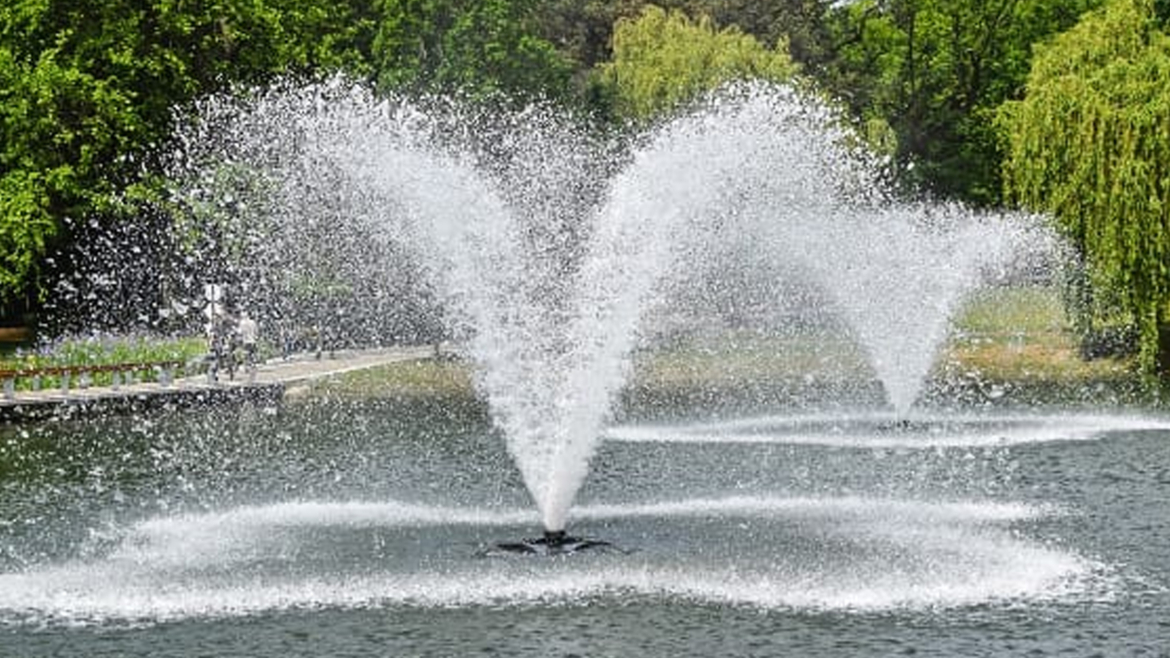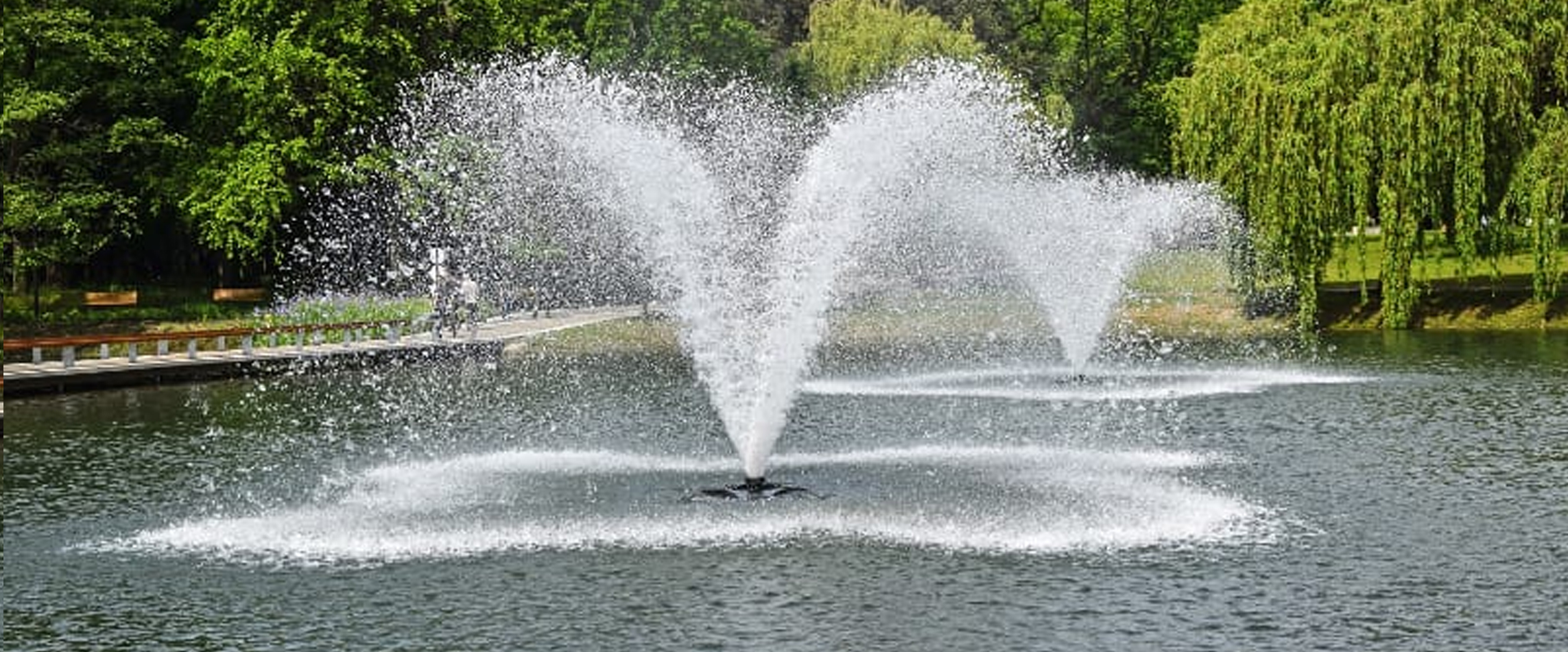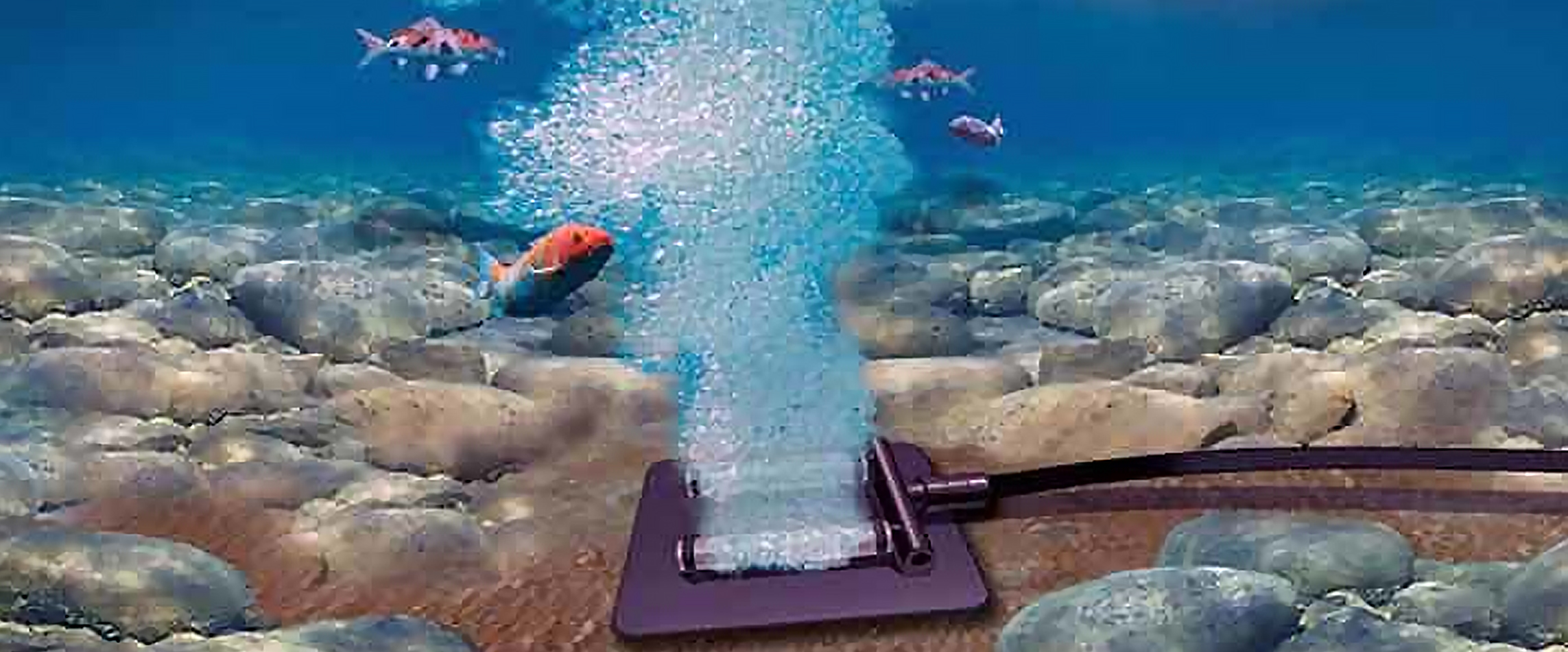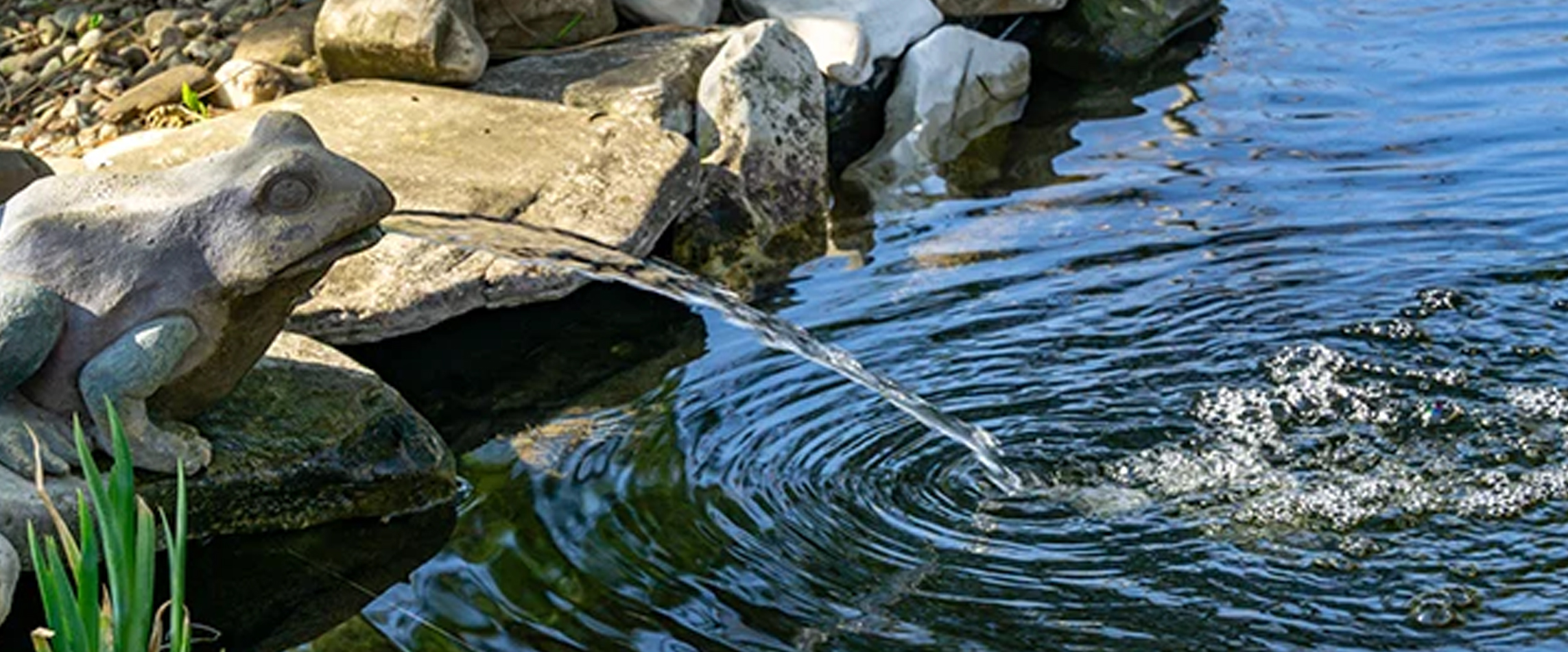In pond keeping, one crucial factor often determines the success or failure of the aquatic endeavor – aeration. Proper aeration is vital in maintaining the delicate balance of the pond’s ecosystem, ensuring pond health and the well-being of the fish, plants, and beneficial bacteria.
Whether you’re a seasoned pond enthusiast or a newcomer to this captivating hobby, understanding the intricacies of pond aeration is essential for creating an eco-friendly and thriving aquatic oasis.
In this blog, we’ll delve into pond aeration, exploring its benefits and providing invaluable installation tips to help you master this critical aspect of pond management.
The Importance of Aeration for Pond Health
Oxygen is essential for every aquatic ecosystem, and the pond health is no exception.
Without adequate dissolved oxygen levels, the pond’s inhabitants, fish, plants, and beneficial bacteria, will struggle to survive and thrive.
Aeration replenishes the oxygen supply and promotes water circulation, preventing stagnation and the buildup of harmful compounds.
Benefits of Proper Aeration for Pond Health
- Improved Fish Health: Adequate oxygen levels are crucial for the well-being of the finned friends. Proper aeration ensures the fish can access the oxygen they need to breathe, grow, and reproduce, reducing stress and promoting overall vitality.
- Enhanced Water Quality: Aeration supports the growth of beneficial aerobic bacteria, which help break down organic matter and convert harmful compounds into less toxic substances. This results in clearer, fresher water, reduced odors, and improved water quality.
- Algae Control: Aeration can help prevent algae growth by increasing oxygen levels and water circulation. Excessive algae growth can quickly turn the pond into an unsightly, green mess. Algae blooms detract from the pond’s aesthetics, deplete oxygen levels, and release toxic compounds.
- Deeper Pond Potential: Aeration allows one to maintain deeper ponds without the risk of stagnation, providing a more diverse habitat for aquatic life and creating a visually appealing water feature.
Types of Pond Aeration Systems for Optimal Pond Health
When it comes to aeration solutions, pond owners have a variety of options to choose from, each with its unique advantages and considerations.
Let’s explore some of the most common types of pond aeration systems for pond health:
- Surface Aerators: These floating devices create a fountain-like effect, splashing water into the air and introducing oxygen through the agitation of the water’s surface. Surface aerators are visually appealing, provide efficient aeration, and are well-suited for smaller to medium-sized ponds.
- Diffused Aeration Systems: These systems use an air pump to force air through a diffuser at the pond’s bottom. The diffuser releases tiny air bubbles that rise through the water column, providing efficient oxygenation and water circulation throughout the pond depth. Diffused pond aeration systems are particularly effective for more extensive and deeper ponds.
- Windmill Aerators: Harnessing the power of the wind, these eco-friendly pond aerators use a spinning propeller to agitate the water’s surface, introducing oxygen and creating a gentle current. They are an excellent choice for those seeking a sustainable and low-maintenance aeration solution, as they require no external power source.
- Waterfall and Fountain Aeration: The movement and splashing of water created by waterfalls and fountains naturally introduce oxygen into the pond, making them attractive and functional aeration solutions. These features enhance the aesthetics of the pond and contribute to the ecosystem’s overall health.
Installation Tips for Pond Aeration Systems
Proper aeration system installation is crucial for optimal performance and longevity. Here are some valuable tips to keep in mind during the installation process:
- Proper Sizing: Ensure the pond aeration system is appropriately sized for the pond’s volume and depth. For optimal results, consult with a professional or follow manufacturer guidelines. An undersized system may struggle to provide adequate aeration, while an oversized system can lead to energy waste and unnecessary costs.
- Strategic Placement: Position the pond aeration system to maximize water circulation and oxygen distribution throughout the pond. Surface aerators should be placed near the center, while diffused aeration systems should be evenly distributed along the bottom for comprehensive coverage.
- Electrical Safety: If using an electrically powered aeration system, follow all safety guidelines and consider using a ground fault circuit interrupter to protect against electrical hazards.
- Seasonal Pond Care: Adjust the aeration system according to seasonal changes. During warmer months, when oxygen levels are naturally lower due to increased water temperature and organic matter decomposition, one may need to increase aeration to compensate.
- Pond Maintenance: Regularly maintaining the pond, such as cleaning filters, checking for clogs, and inspecting components for wear and tear, is essential for ensuring the efficient and long-lasting operation of your aeration system.
Pond Cleaning and Eco-Friendly Pond Practices for Better Pond Health
While aeration plays a crucial role in maintaining pond health, it’s important to complement it with regular pond cleaning and eco-friendly pond practices to create a sustainable and balanced ecosystem.
Here are some tips to incorporate:
- Debris Removal: Regularly remove leaves, twigs, and other organic matter from the pond to prevent excessive decomposition, which can deplete oxygen levels and promote the growth of harmful organisms.
- Water Testing: Regularly test the pond’s water parameters, including pH, ammonia, nitrites, and nitrates, to ensure optimal conditions for the fish and pond plants. Adjust as needed using eco-friendly methods.
- Natural Filtration: Incorporate natural filtration systems, such as plant-based filters or constructed wetlands, to help remove excess nutrients from the pond water. These systems improve water quality and provide habitat for beneficial organisms.
- Responsible Chemical Use: If necessary, use chemicals sparingly and responsibly, following manufacturer guidelines and prioritizing eco-friendly options whenever possible. Overuse of chemicals can disrupt the delicate balance of the pond’s ecosystem.
- Sustainable Landscaping: Choose native plants and create a buffer zone around the pond to prevent runoff from fertilizers and pesticides, which can negatively impact water quality and harm aquatic life.
Combining proper aeration with regular pond cleaning and eco-friendly pond practices can create a self-sustaining, low-maintenance aquatic ecosystem that supports diverse life while minimizing the environmental impact.
Advanced Pond Aeration Techniques and Considerations for Enhanced Pond Health
As the pond-keeping journey progresses, one may want to explore advanced aeration techniques and considerations to take pond health and performance to the next level.
Here are some options to consider:
- Aeration Zone Optimization: Rather than relying on a single aeration point, strategically placing multiple aerators or diffusers in different pond zones can ensure comprehensive oxygen distribution and water circulation. This is particularly beneficial for larger or irregularly shaped ponds.
- Bottom Aeration and Destratification: In deeper ponds, thermal stratification can occur, leading to an oxygen-rich upper layer and an oxygen-depleted lower layer. Bottom aeration systems and destratification techniques like airlifts or circulators can effectively mix these layers, preventing stagnation and promoting a uniform oxygen distribution throughout the water column.
- Automated Aeration Control Systems: Advanced control systems can monitor dissolved oxygen levels, water temperature, and other critical parameters in real time, automatically adjusting aeration levels as needed. This optimizes oxygen delivery and conserves energy by preventing unnecessary aeration when conditions are favorable.
- Regenerative Blowers and Compressors: Traditional aeration compressors and blowers can be energy-intensive and noisy. Consider investing in regenerative blowers or compressors, which are more energy-efficient, quieter, and often require less maintenance.
- Integrated Aeration and Biofiltration: Combining aeration with biofiltration techniques, such as moving bed biofilm reactors or constructed wetlands, can further enhance water quality by fostering the growth of bacteria that break down organic matter and nitrogen compounds.
- Fish Stocking Considerations: When stocking the pond with fish, consider their specific oxygen demands, stocking density guidelines, and potential fluctuations in oxygen levels throughout the year. Adjust the pond aeration system to accommodate the fish population and prevent overcrowding or oxygen depletion.
Implementing these advanced pond health aeration techniques and considerations may require additional investment and expertise.
Still, the rewards are well worth it – a thriving, balanced pond ecosystem with crystal-clear water and healthy aquatic inhabitants.
Wrapping it Up
Mastering the art of pond aeration is a critical step in creating a flourishing and eco-friendly pond oasis.
By understanding the vital role of aeration in maintaining pond health, selecting the appropriate aeration system for the needs, and following proper installation and pond maintenance practices, one can cultivate a thriving ecosystem that supports vibrant fish populations, lush aquatic plants, and a balanced microbial community.
Remember, aeration is not a one-size-fits-all solution; it requires careful consideration of the pond’s unique characteristics, stocking levels, and environmental factors.
Whether one opts for a visually appealing surface aerator, an efficient diffused aeration system, or an eco-friendly windmill aerator, the key is to tailor the approach to the specific pond’s requirements.
Complementing the aeration efforts with regular pond cleaning, water testing, and eco-friendly pond practices will further enhance the sustainability and longevity of the aquatic paradise and pond health.
By embracing these methods, one will create a stunning water feature and contribute to preserving our precious marine ecosystems.
So, dive in and embark on this rewarding journey of pond keeping, armed with the knowledge and tools to master the art of aeration.
With patience and dedication to nature’s delicate balance, one witnesses the transformation of the pond into a true oasis. Happy Ponding!




